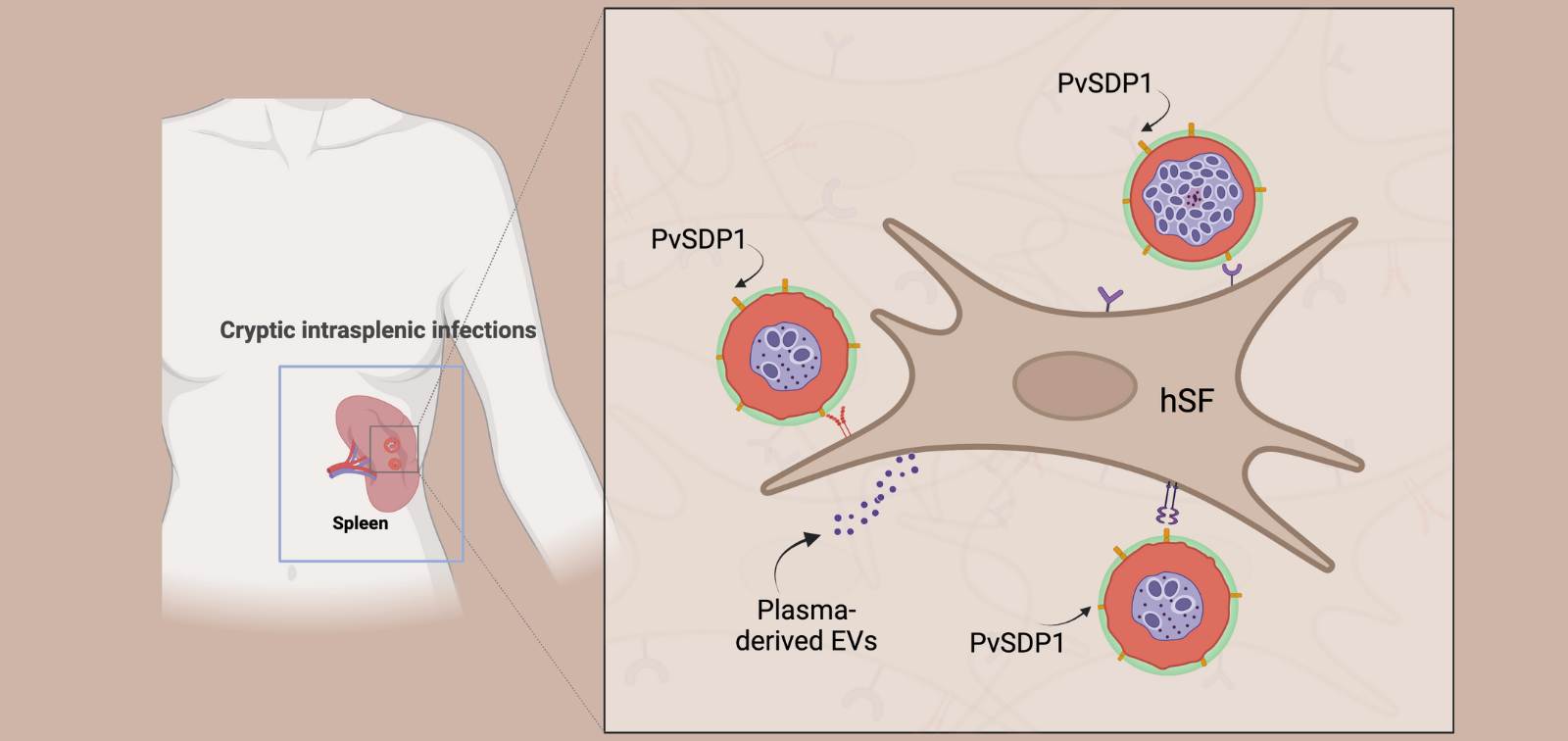Study identifies how 'Plasmodium vivax' malaria parasite hides in the spleen
The results reveal that infected red blood cells bind to spleen cells via a parasite protein, and that extracellular vesicles promote this process.
11.06.2024
A new study led by the Barcelona Institute for Global Health (ISGlobal), a centre supported by the ‘la Caixa’ Foundation, and the Germans Trias i Pujol Research Institute (IGTP), provides new information on the role of the spleen and extracellular vesicles in latent infections caused by Plasmodium vivax.
Malaria caused by P. vivax is widespread worldwide, with nearly 77 million cases in 2022. While there is no sustained local transmission in Catalonia or most of Europe, it is estimated that more than 2 billion people are at risk of contracting the disease in endemic regions such as Southeast Asia and Latin America.
P. vivax infection is transmitted by mosquito bites. Once infected, a person may develop an acute infection – with symptoms including fever, chills, sweats, and muscle aches – or the parasite may remain in a latent state. This poses a significant challenge to the diagnosis and global eradication of the disease, as up to 90% of chronic P. vivax infections are asymptomatic and many go undetected by current diagnostic methods.
The role of the spleen in P. vivax infections
Carmen Fernández-Becerra and Hernando A del Portillo, who lead the Plasmodium vivax and Exosome Research (PvREX) group at ISGlobal and IGTP, have been studying for years how the parasite manages to hide and evade immune responses and conventional treatments. Their focus is on the spleen, where recent studies have shown that over 95% of the parasite's biomass is concentrated.
Previous research by the PvREx group has shown that the spleen not only filters out old and defective red blood cells but also serves as a hiding place for malaria-infected red blood cells. They have also shown that extracellular vesicles – small structures secreted by infected cells – facilitate this hiding process. These vesicles promote the adherence of infected cells to spleen cells, a crucial mechanism for the survival of the parasite.
Cellular events in a P. vivax infection
In collaboration with researchers from the Josep Carreras Leukaemia Research Institute, the Institut Pasteur du Cambodge, and the Microbiological and Biomedical Research Group of the Universidad de Córdoba, the PvREX team provides new details on the cellular processes involved in P. vivax infection.
Using advanced genetic techniques, the researchers show that a P. vivax gene, whose expression is dependent on the spleen, is associated with the parasite's adherence to spleen cells. This adherence is enhanced in the presence of extracellular vesicles derived from the plasma of infected patients.
By analysing individual cells, they show for the first time that extracellular vesicles signal spleen cells to express proteins that facilitate the parasite's adherence. "These results open new avenues for identifying signalling pathways induced by extracellular vesicles in human spleen cells, a critical step in interrupting the transmission of the parasite", says del Portillo.
Asymptomatic chronic infections are a major challenge to malaria eradication. This study provides valuable information on how malaria parasites hide in the human spleen, and highlights the importance of understanding the interactions between the parasite and its host. "Identifying these interactions is essential to combat this global health challenge", says Fernández-Becerra.
Reference
Ayllon-Hermida A, Nicolau-Fernandez M, Larrinaga AM, Aparici-Herraiz I, Tintó-Font E, Llorà-Batlle O, Orban A, Yasnot MF, Graupera M, Esteller M, Popovici J, Cortés A, Del Portillo HA, Fernandez-Becerra C. Plasmodium vivax spleen-dependent protein 1 and its role in extracellular vesicles-mediated intrasplenic infections. Front Cell Infect Microbiol. 2024 May 17;14:1408451. DOI: 10.3389/fcimb.2024.1408451.



